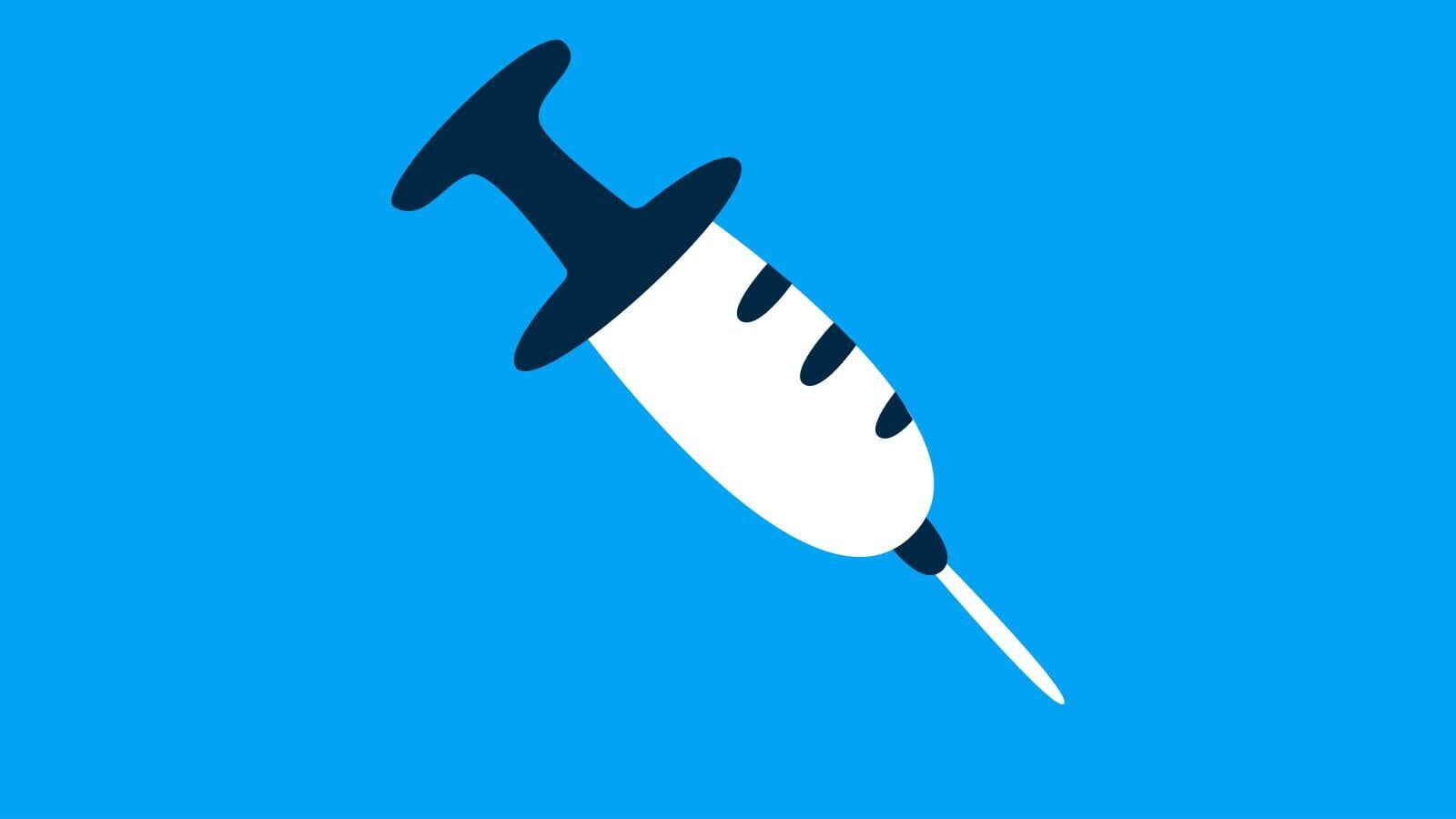
Most of us aren’t too fond of getting shots. For some, the fear takes over and causes severe feelings of dread and anxiety. It may even stop people from getting medical care they need.
Symptoms of needle phobia can include anxiety, panic attacks, dizziness, fainting, insomnia, high blood pressure, elevated heart rate, or feeling emotionally or physically aggressive. Even hearing or thinking about getting a shot may be enough to elicit a reaction in a person with trypanophobia.
The causes aren’t known, but genetics, changes in brain chemistry and past traumatic experiences may play a role in needle phobias. An analysis by researchers at the University of Michigan showed that 20 to 30 percent of adults studied cited a concern about needles, ranging from mild anxiety to a phobia strong enough to keep some from seeking medical care.
It’s not just the COVID-19 vaccine that people may avoid because of a needle phobia. A fear of needles can deter people from having other vaccinations, blood tests, contraceptive injections, surgical procedures and other necessary medical interventions.
Fear, Anxiety, or Phobia?
Anxiety, fear, and phobia are all related terms, yet they are distinct experiences. Fear is described as a reaction to a known danger, stimulus, or perceived threat. This uncomfortable reaction can be mental, emotional, or physical and can resemble the stress response of “fight or flight.”
Anxiety, on the other hand, is a nonspecific ambiguous feeling of unease. It tends to be more about the anticipation of the event, rather than any specific fear or concern. Dental anxiety can cause feelings of apprehensiveness, negative thoughts, and imagining that negative experiences will occur about an upcoming dental appointment.
Phobia is a significant fear and is usually excessive, irrational, and persistent. Phobias are present in response to either an actual threat, or the anticipation of that threat. What distinguishes a true phobia from the anxious or fearful feeling is how intense the fear is.
Intense fears and phobias stem from a variety of sources including bad experiences in the past, horror stories told by others, fear of panicking in front of people, fear of losing control or of fainting.
Feeling Better
Fortunately, there are a lot of simple things you can do to ease anxieties and fears and feel more in control.
Breathe.
Yes, Abdominal Breathing works for this too! Deep breathing triggers the parasympathetic nervous system and causes the body and mind to relax.
Visualization.
Imagine a time when you felt really relaxed and focus on the details. In your imagination, remember as many details about that time as you can, the colors, smells, sounds, and textures. This will shift your focus away from what any fears and anxieties you may be feeling.
You Don’t Need to Watch.
Look away. This decreases the anticipation of the event. Find something in the room to focus on and notice every detail of it.
Shift Your Focus.
Focus on another part of your body, like your other arm, or your left toe. Focus all of your attention on how that other part of your body feels.
Tell Your Nurse or Physician.
Let your healthcare provider know that you are feeling anxious. They can tell you what position to put your arm in and other helpful things to make the process more comfortable.
The Hypnotic Process
Using hypnosis is an effective means to help reduce and relieve anxiety for people with fears, anxieties, and phobias. Hypnosis is a natural, super-focused state of mind. It may be more useful to think of it as a process of working around the conscious mind that allows the subconscious mind to accept new ideas and suggestions more easily.
The hypnotic process for people with a high level of fear or phobia first dissociates from the fearful state, introduces new coping strategies, anchors them into a relaxed and calm state, and sets the new expectation of how future events will play out.
Throughout the process the hypnotist is using suggestions, stories, imagination, and metaphors to untangle the fears, instill new coping strategies, and anchor in a calm, relaxed state that the client can call on anytime in the future, anywhere they like.
The hypnotist can guide the client through imagined scenarios where they can experience feeling calm and in control. Since imagination is how the subconscious mind processes information, these methods help to reprogram the expectations of what the next doctor’s visit will be like.
What Healthcare Providers Can Do
Practicing clinical hypnosis requires specialized training and certification, yet there are many other tools, such as using appropriate language cues, guided imagery and abdominal breathing, that provide enormous benefit for patients and practitioners. When patients are in a more relaxed state, they can be more compliant during treatment, have fewer complaints and complications, and heal faster.
As a professional hypnotist, I offer training to dental and medical professionals on how to use hypnotic strategies in their practices.
Referral to a qualified professional hypnotist is appropriate when the level of fear, anxiety, or phobia is beyond what can be easily managed by guided relaxation and guided imagery techniques.∎
Click here for your Free Hypnosis audio program: “Stop the Cycle of Worry”
Click here for your Free “Abdominal Breathing for Anxiety and Stress Relief” tool
Karen Gray is a Certified Hypnotist, Registered Nurse, and Director of Green Mountain Hypnosis. For more information on how you can use hypnosis to change your life,
Schedule your Free Strategy Call Today!